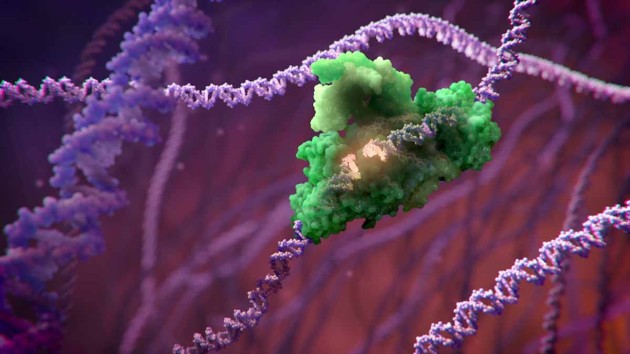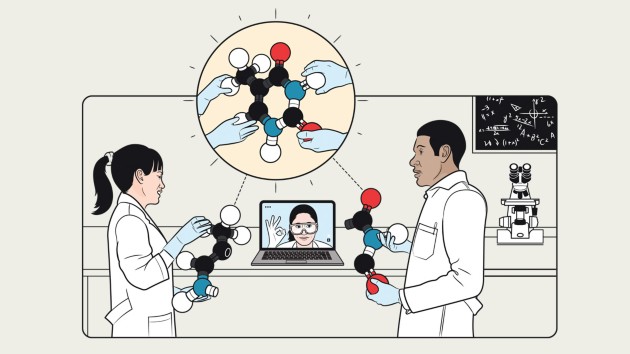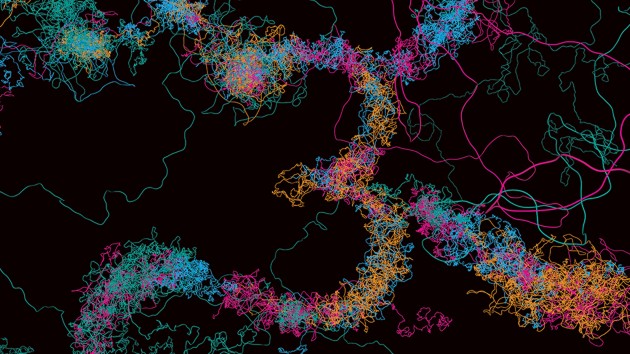Special |
Collections
Filters
-
Collection Type
-
-
Special |
 Human Pangenome Reference
Human Pangenome Reference
The human reference genome is fundamental to basic, translational and clinical research.
Image: Darryl Leja/NHGRI; Sequence map: Adam Novak/UCSC -
Special |
 FinnGen
FinnGen
It is the age of large biobanks in human genetics.
Image: Federico Simeoni, Małgorzata Nowicka, Nicola Cerioli, Rupesh Vyas -
Special |
 SCGE
SCGE
Genome Engineering has great potential to change how we model, understand, and treat diseases.
Image: XVIVO -
Special |
 Computational social science
Computational social science
The availability of big data has greatly expanded opportunities to study society and human behaviour through the prism of computational analyses. The resulting field is known as computational social science and is defined by its interdisciplinary approaches. However, this type of cross-discipline work is intrinsically challenging, calling for the development of new collaborations and toolkits. In this Nature special collection of articles, we explore some of the fundamental questions and opportunities in computational social science.
Image: Taj Francis -
Special |
 How to collaborate in science
How to collaborate in science
Science is a team effort, often straddling disciplines and regions.
Image: Jameson Simpson -
Special |
 Vertebrate Genomes Project
Vertebrate Genomes Project
Reference genome assemblies provide a map of a species’ DNA sequence and its spatial context—that is, where along the chromosomes a specific piece of DNA sequence can be found.
Image: Visuals Unlimited/Nature Picture Library -
Special |
 The human genome at 20
The human genome at 20
The publication of the first drafts of the human genome launched a new era in biological discovery, collapsing the number of expected genes, but vastly expanding the understanding of genetic regulation. Now, as researchers pump out individual genomes and genomic analyses by the tens of thousands, the field is contending with some of the same central conflicts regarding data availability, equity and privacy. This special looks at what the 20 years in a post-genome world has wrought, and what to expect in the next 20.
Image: Illustration by Ana Kova -
Special |
 The ocean in humanity’s future
The ocean in humanity’s future
The oceans have trapped one-third of the carbon dioxide emitted by human activities since the 1980s. They are home to 50-80% of life on Earth, feed over three billion people and support the livelihoods of hundreds of millions of people.
Image: Chaideer Mahyuddin/AFP/Getty -
Special |
 ENCODE 3
ENCODE 3
How cells, tissues and organisms interpret the information encoded in the genome has vital implications for our understanding of development, health and disease. Launched in 2003, the ENCyclopedia of DNA Elements (ENCODE) project aims to map the functional elements in the human genome (later expanded to include model organisms).
Image: StoryTK -
Special |
 gnomAD
gnomAD
The human genome comprises both our protein-coding genes and the regulatory information that controls when, and to what extent, those genes are expressed.
Image: SciStories -
Special |
 TRACERx
TRACERx
Cancers evolve at a dynamic pace to adapt to immune pressure, colonize new niches, and evade therapy. Tracking these changes can help us improve diagnosis, better tailor therapies, and forestall recurrence, but it requires intensive monitoring beyond current clinical practice.
Image: Jeroen Claus / Phospho Biomedical Animation

 All of Us
All of Us